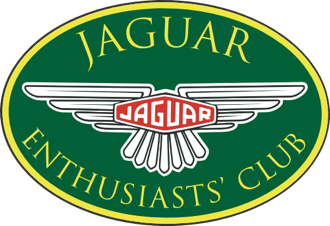
The XK
The XK series has underpinned Jaguar’s sports car line-up since the introduction of the original XK120 in 1948. The XK120 is the archetypal Jaguar sports car – a voluptuously flowing body wraps two occupants who are set far back in the wheelbase. The lucky driver operates the now iconic Jaguar twin-cam straight-six engine, named XK6, which was used by the brand from the 1948 introduction all the way through to 1992.
The XK series gradually grew faster, more accomplished and wider with the introduction of the XK140 in 1954, and the XK150 in 1957. The pinnacle of the XK line was surely the XKSS, which was a road going version of Jaguar’s Le Mans winning D-Type. It was a pure race car for the road, and shared little in common with the XK150 other than its badge and basic engine block design. Just 16 were built in period, however Jaguar Classic announced in 2016 that they will build a further 9 cars to the exact same specification.
The mainstream XK series was replaced by the immortal E-Type in 1961. Although it was called the XK-E in some parts of the world for marketing purposes, it is not usually considered an XK series car, and the name lay dormant until 1996.
The XK8 was a modern sports car for the new millennium, had a latest generation all-aluminium V8 engine and was available both in coupe and convertible body styles. A supercharged version called the XKR came in 2000. A new XK and XKR were launched in 2006 and stayed in production until 2014. The final evolution was 2012’s 186mph XKR-S. In a historically symbolic fashion, the XK was replaced by the F-Type, which remains in production today.




The XJ
The XJ nameplate was launched in 1968 and came to symbolise the style of full-size luxury saloons that made Jaguar famous.
The XJ6 revolutionised the market upon its launch; that dependable XK6 motor gave bucket loads of torque for relaxed cruising at high speeds, and the styling, by Italian design house Pininfarina, was achingly gorgeous in an otherwise staid market.
The XJ6 went through several major evolutions during its lengthy lifespan. The Series 2 came in 1973, a two-door pillarless coupe version was launched in 1975, and the final Series 3 iteration saw that same basic design carry through from 1979 until 1992.
1975 also saw the launch of the XJ-S, a luxury grand tourer which replaced the E-Type. It was gradually developed and updated in both coupe and convertible form until its replacement by the XK8 in 1996.
The XJ6 saloon’s replacement, the XJ40, came in 1986. The nameplate was gradually modernised throughout the 1990s with each new version – the X300 in 1994, and the X308 in 1997. Jaguar broke new ground with the X350 XJ in 2003 – it was the first Jaguar to feature an all-aluminium body shell for reduced weight and improved ride quality, a trait that carries through to all Jaguars today. The model was facelifted in 2007 with the launch of the X358.
The XJ nameplate was also applied to a small handful racing and supercars, although for an entirely different reason. Since before the second world war, Jaguar’s internal prototype naming system began with ‘X’, meaning ‘experimental’. The 1966 XJ13, a mid-engine V12 prototype sports racer, became the stuff of pure legend, even though the only prototype was destroyed in a testing accident. Each subsequent iteration of Jaguar prototype sportscar, for use in IMSA and Group C racing, were named XJR-5 through to XJR-17, and 1992’s limited production XJ220 briefly held the world record for fastest production car.
Jaguar broke new ground once again with the X351 XJ saloon in 2009. Ian Callum’s fresh new design language took Jaguar down a bold new path, one which it continues on today. Its 2009 unveiling, by Jay Leno and Elle Macpherson in London’s Saatchi Gallery, was streamed live on Jaguar’s website – high tech stuff for 2009.
The upswept rear taillights and vast, sweeping dash was truly adventurous design for 2009, and it still feels modern today. It remains in production with the thunderous XJ575 taking the headlines, but its replacement is not far away.
Rumours persist that the upcoming XJ will be electrified, and will become the first all-electric luxury limousine on sale. That’s all in the future, however. We’ll likely have to wait until the XJ’s 80th birthday celebrations in 2028 to properly reflect on it!




Jaguar Summer Festival
While these significant celebrations will certainly take the spotlight at Wroxall Abbey on the Summer Festival weekend, there will be plenty more for fans of every Jaguar model to enjoy. Click here to learn more about how you can be involved.

We have a massive selection of official Jaguar UK merchandise to complement your Jaguar, take a look at our club shop by clicking HERE!

